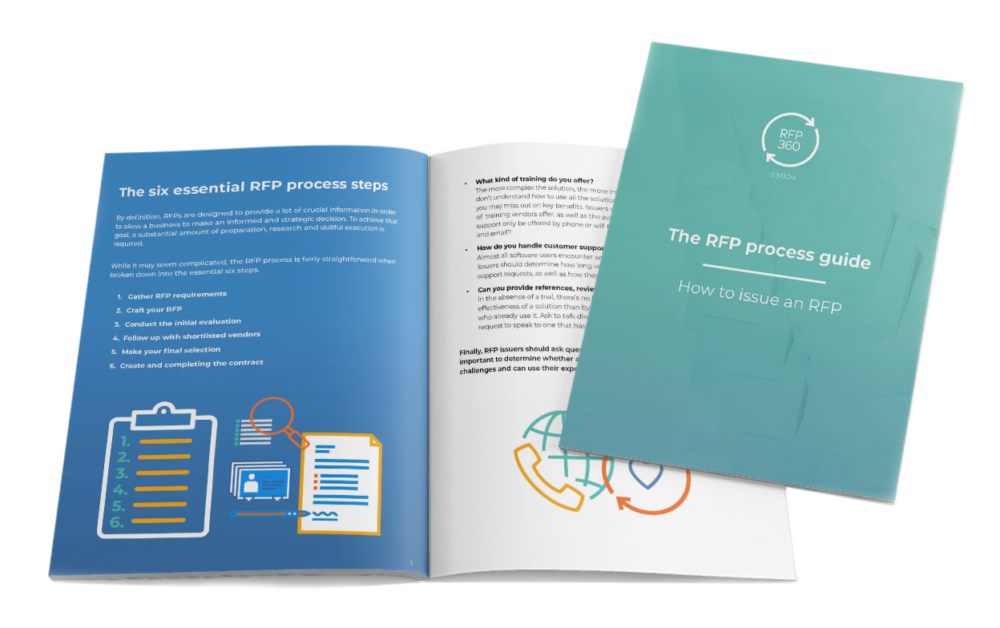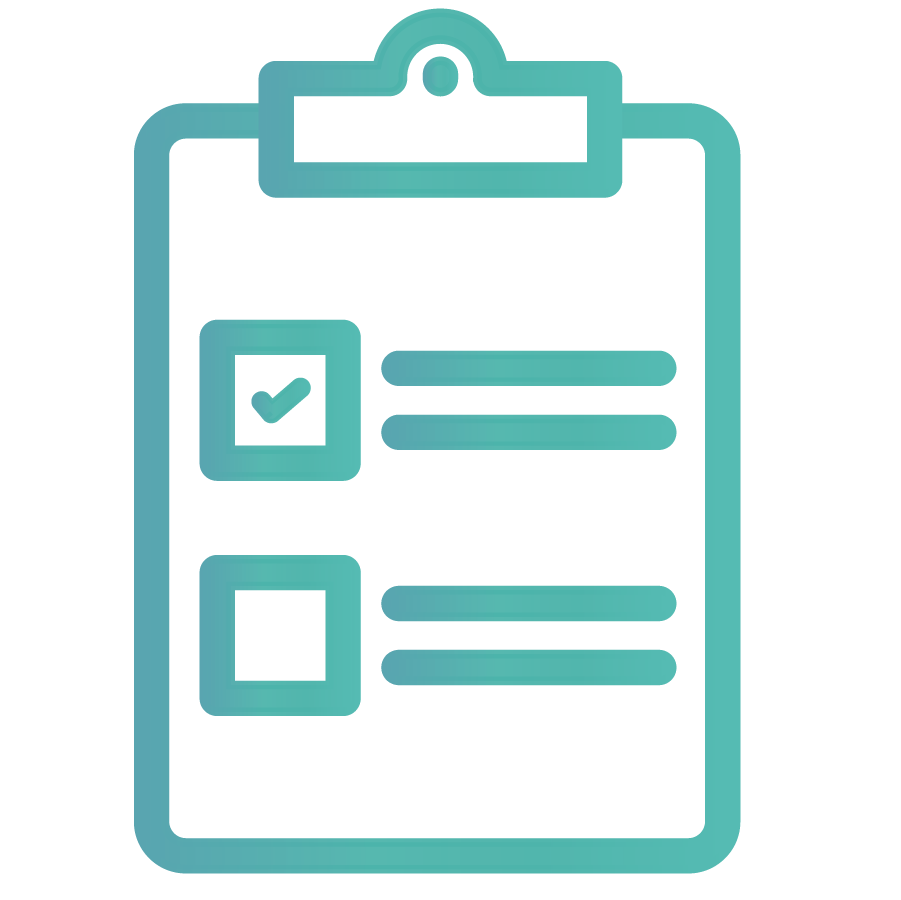Marketing is an important part of any successful, growing business. From television ads to website design, the results of marketing efforts surround us almost constantly. Consequently, many of the campaigns we see every day started as a humble marketing RFP.
No matter what your business buys or sells, your organization will likely participate in the RFP process at some point. Indeed, your business may issue RFPs for marketing services or respond to them. So, for proposal, procurement and marketing professionals, knowing how to manage the RFP process is essential to success.
This post will explore everything you need to know about marketing RFPs. Starting with the basics, we’ll define what a marketing RFP is, their benefits and types of RFPs you may encounter. Next, we’ll walk through how to issue an RFP for marketing services. Then, you’ll see a how-to guide for finding marketing RFPs, responding to and winning them. Finally, you can explore how the process works with sample marketing RFPs, helpful templates and real-world examples.
- Marketing RFP and proposal basics
- How to issue and manage an RFP for marketing services
- Tips for responding to marketing RFPs
- Sample marketing RFP, templates and examples
Marketing RFP and proposal basics
What is a marketing RFP?
A marketing request for proposal (RFP) is a formal questionnaire document that organizes information and enables buyers to compare marketing service providers.
Used to identify the best partner both for one-time projects as well as ongoing marketing services, the RFP process allows buyers to improve objectivity in vendor selection.
For the marketing agencies and firms who seek to serve these businesses, every RFP is a new opportunity to grow their client base and revenue.
What is a marketing proposal?
A marketing proposal is created and delivered by a marketing agency, firm or service provider in response to a purchasing organization’s RFP. The RFP response details the marketing agency or service provider’s offer.
The purpose of the proposal is to answer any questions the buyer may have as well as promote the benefits of partnering with the organization. The proposal often includes a project plan, marketing strategy, implementation timeline and pricing.
Benefits of using a marketing RFP
Whether you’re seeking marketing services or you’re part of a marketing agency, the RFP process improves how you connect with other organizations. Indeed, the detailed approach of marketing RFPs allows buyers to consider multiple decision factors and ask all the right questions. At the same time, the format gives suppliers ample customer information, empowering them to bring attention to the most advantageous elements of their services.
Reduced procurement costs
Issuing RFPs is one part of the strategic sourcing approach to procurement. Essentially, the idea is to reduce the overall cost of procurement by finding the supplier that will be the best long-term marketing partner rather than the most affordable in the moment. Consequently, RFPs provide an efficient, competitive and predictable process that is well suited to that search.
Examine vendor experience
Unlike purchasing tangible goods that have defined specifications, the outcomes of marketing campaigns are highly dependent upon the agency’s vision and experience. While the buyer defines scope and deliverables, often each agency provides an entirely unique creative experience and end product. Accordingly, many marketing RFPs include questions to explore staff qualifications, past work and customer results.
Improved fairness and transparency
Historically, vendor selection largely depended upon word-of-mouth recommendations. Unfortunately, the lack of competition and new ideas led to inflated costs and a lack of marketing innovation. Luckily, by design, the RFP process includes multiple qualified vendors and ensures each has a fair chance to win available opportunities.
Common types of marketing RFPs
Thanks to the benefits and prevalence of the RFP process, as well as the vast array of marketing strategies and services, there are dozens of types of marketing RFPs. In addition, an organization may issue a marketing RFP for a variety of reasons. For example, they may be issued to find a partner to execute a large project, act as a marketing consultant, deliver a one-time service or provide ongoing support.
The most common marketing RFPs are for:
- Digital marketing
- Marketing services
- Advertising
- Social media
- Public relations
- Online marketing
- Branding/brand development
- Video production
- Graphic design
- Web site design and development
How to issue and manage a marketing services RFP
No matter what kind of RFP you’re issuing, there are three key steps to the process. To start, you must conduct research and write the RFP. Next, you select the marketing agencies you’d like to include and issue the RFP. Finally, you review the proposals you’ve received, score them and select a winner.
Below you’ll find a little more detail about each step, but for a comprehensive guide, download the RFP process ebook.

1. Create your RFP for marketing services
Define your needs, scope and deliverables
The first step in issuing a marketing RFP of any kind is to define your goals. What is your organization hoping to achieve? Gather your stakeholders and any other involved parties to discuss the services needed, the scope of your project and the vision for the deliverables you expect to receive.
Develop an RFP project timeline
Next, create an RFP timeline to keep your procurement project on track. In addition to providing key dates to interested vendors, the timeline keeps your team updated as the RFP progresses. Be sure to include the RFP issuing date, a period for vendor follow-up questions and answers, the deadline for proposal submission, expected evaluation time frame and the date for the announcement of the final selection.
Create your RFP for marketing services
Certainly, a marketing RFP is a little different than other procurement projects. Due to the creative nature of marketing, you may find it challenging to come up with insightful questions. For ease of scoring, include as many close-ended questions as possible.
In addition to your RFP questions, your RFP should include:
- The project background and goals
- Project scope and deliverables
- The RFP timeline and vendor deadlines
- RFP requirements including minimum qualifications as well as submission and evaluation criteria
- Request for references, project portfolios and case studies
2. Issue the RFP and manage vendors
Narrow your vendor pool
While the RFP process makes it much easier to compare several vendors at once, it’s important to limit your vendor pool to a manageable number. Certainly, it’s not uncommon for open RFPs to receive responses from marketing agencies that are simply not a fit.
To avoid sifting through a huge stack of proposals, we recommend limiting your RFP to six or fewer vendors. In most cases, the size of the marketing agency should be relative to the size of your organization. For example, a small mom and pop shop likely shouldn’t use the same agency as Coca-Cola.
As you select agencies to include, it’s wise to have a combination of vendors recommended by peers as well as any that specialize in your industry and market. If you’re not sure where to start to find these agencies, check out Rnked to find agencies that might meet your needs.
Send the RFP
Now, it’s time to issue your RFP and get it into the hands of eager marketing agencies. Naturally, we recommend using RFP software to issue, automate and manage RFPs. However, you can also send the request via email or post it publicly.
Field vendor questions
When you issue an RFP for marketing services, expect to receive follow-up and clarifying questions from vendors. To save time and ensure transparency, gather all the questions and answer them in a single document available to all vendors.
Follow up with a friendly reminder
Waiting for proposals to arrive can be stressful. After all, you already did all the work to create the RFP and select the vendors, and if no one responds, you’ll have to start over. So, about a week before the proposal deadline, send a friendly reminder to any agency that hasn’t yet responded.
3. Evaluate and compare proposals
Score the proposals
After the proposal deadline passes, it’s time to gather your responses and start scoring them. First, review each proposal for completeness and compliance with your minimum requirements. Next, score the responses and sections that have clear, closed-ended questions before moving on to the more subjective and complex questions.
Evaluate complex responses and references
As you might suspect, many of the questions in a marketing RFP will be open ended. In this situation, it’s helpful to engage your stakeholders. For instance, if you’re engaging search engine optimization (SEO) services, it may be helpful to have your digital marketing manager or IT team evaluate questions about the past performance and technical qualifications of vendors.
Pick your partner
Finally, it’s now time to pick a partner to move forward with. Compare the RFP evaluation results side-by-side. Many procurement teams copy and paste results into an Excel sheet to review them. Unfortunately, the manual aggregation and formatting is time consuming, often taking hours. Alternatively, you can explore the results using RFP automation, visualizations and scoring dashboards in your RFP management platform.
Hopefully, you’ll have a clear winner. However, if you don’t, you may need to send follow up questions or schedule RFP presentations.
![]()
Sections to include in your RFP
- Project summary – What do you want to accomplish?
- Company overview – Who are you?
- Project background – What prompted you to seek a partner?
- Scope – Which items are must haves, nice to haves and not in scope?
- Budget – What do you plan to spend?
- RFP and project timeline – When do you need to receive responses? What is the project timeline?
- Submission requirements – What format should proposals be in?
- Evaluation criteria – How will the proposals be scored? What factors are most important to your organization?
- RFP questions – What do you need to know to make a decision?
Tips for responding to a marketing RFP
For marketing agencies and consultants, RFPs offer an opportunity to win new business and fuel your company’s growth. However, creating appealing and compelling proposals takes time. And, if you’re not winning, that time is wasted. Consequently, improving your proposal process has the potential to significantly impact your bottom line.
Marketing proposal best practices
Be selective
When you receive an RFP, it’s natural to get excited, jump right in and start responding. Unfortunately, not every marketing RFP you encounter is a good fit for you. Consequently, improving your win rate is sometimes as simple as being more selective.

So, before you start creating your next marketing proposal, carefully evaluate the RFP and ask yourself some key questions before you decide to bid or not to bid.
- Is this bid a long shot?
- Can your agency deliver the services requested?
- Do you have the resources to complete the project on time?
- Are you competing against an incumbent provider?
- Have you successfully completed similar projects before?
- Do you have available references from the buyer’s industry?
Download this helpful checklist to guide your to bid or no bid discussions.
Get organized
Meeting RFP deadlines can be a challenge. However, adopting an RFP project management approach can help keep you on track. Indeed, there are a number of proven strategies to organize the people, information, documents and tasks required to create a marketing proposal.
For example, you may try a RACI matrix, proposal timeline or project implementation plan. Each of these methodologies ensures that your proposal team stays on track and aligned.
Reuse previous proposal content
The most time consuming part of creating a proposal is answering questions and creating the content. From one RFP to another, you’ll likely notice that about 60 percent of the questions are the same or very similar. Accordingly, you can reuse previous proposal content to save time.
Many organizations have a proposal content knowledge library where they catalog and store questions and answers from past RFPs. Not only does this make your job as the proposal coordinator easier, but it also lightens the workload for your subject matter experts (SMEs).
To maximize the value of your RFP knowledge library and improve consistency, build your library in a single centralized location. For example, you could build your library in Google Drive, Sharepoint or, better yet, a proposal management software platform.
Review, revise and review again
This is one of the most important steps in creating a marketing proposal. Don’t rush the review of your proposal. Be thorough and ask yourself: Is the proposal consistent? Does it comply with the requirements? Is it clear, compelling and on brand?
If an organization is going to trust you with their marketing efforts, they want to be sure that you pay attention to the details.
Elements to include in your marketing proposal
When competing with other marketing agencies, the small details can make or break your proposal. Every section of the proposal can be leveraged to make an impact.
Introduce yourself with the executive summary
Your proposal response should start with an executive summary. This page acts as an introduction to the buyer.
Consider this page your one shot to capture attention. After all, it may be the only part of the proposal some of the decision makers read. As such, the RFP executive summary should provide an overview of the marketing proposal while explaining how you will enable the customer to achieve their goals.
Download this template to make your executive summary awesome (and easy).
Be more memorable in the RFP cover letter
After the executive summary comes the RFP cover letter. Traditionally, this is an underutilized tool that can give you an advantage. Indeed, use the cover letter to showcase your personality and differentiators. Make it conversational, approachable and relevant.
Get inspired by downloading this RFP cover letter template.
Make your messaging persuasive
Expectations are high when it comes to proposals created by marketing agencies. The format, visuals and messaging must all be professional and compelling. However, creating RFP messaging that is clear, concise, accurate and relatable requires a unique balance. As you write, share your expertise but don’t use too much industry jargon.
Seal the deal with your RFP presentation
RFP presentations are a common part of the marketing RFP process. Indeed, finding a partner that makes collaboration easy is often a must-have decision factor when buyers select an agency. Use this face-to-face meeting to establish a report, create connections and share why your company culture is a great fit for their project.
How to find marketing RFPs
Many organizations, municipalities and government agencies make their RFPs public to solicit bids from all interested parties. And, for many marketing agencies, responding to these open RFPs is a crucial part of their growth strategy. Consequently, knowing how to find RFPs is a key skill. One of the primary ways to stay up to date on new opportunities is to subscribe to an RFP database service.

RFP databases with marketing opportunities
FindRFP – Government marketing RFP database
This RFP database specializes in government RFPs. Due to regulatory requirements, many agencies must publish RFP opportunities publicly to ensure transparency and fairness. Conveniently, with a FindRFP subscription, you can receive proactive notifications in real time when new opportunities are posted.
EverythingPR – Public relations RFPs
Marketing agencies that provide public relations services can find details about many of the latest RFP opportunities using EverythingPR. The website also provides expert advice as well as the latest in PR news and trends.
RFPMart – Bidder Resources
Dealing primarily with government RFPs, this database is updated regularly with new requests. Here you’ll find social media, marketing, digital services, SEO and branding opportunities.
Sample marketing RFP, examples and templates
Marketing RFP templates
Marketing agency RFP template – Agency Loft
With instructions and a helpful section outline, this marketing RFP template offers a solid foundation for customization. The template suggests asking vendors to provide a corporate overview, proposed solution information, references and a project budget. In addition, Agency Loft provides a helpful decision matrix to help facilitate RFP scoring.
Email marketing RFP template – Marketing Sherpa
This fill-in-the-blank RFP template provides a great starting point for anyone looking for a partner to help them with email marketing. As you review the template, be sure to remove sections and questions that are not applicable to your organization and project.
Video production and marketing RFP template – Thoughtcast Media
Video content plays a big part in a well-rounded marketing campaign, but it’s hard to know what to ask potential vendors. Luckily, you can start with a video production RFP template. Thoughtcast Media provides a helpful guide to finding the right partner. Helpfully, they also offer RFP templates for both in-person and remote filming options.
Marketing RFP sample and examples
Marketing campaign RFP sample – Vermont Department of Tourism
To bid for this RFP opportunity, each vendor submitted a pre-qualification form. This practice is common for large organizations and agencies that receive numerous inquiries from interested vendors. In addition, this marketing RFP example is very specific regarding the required contents of each proposal.
Public relations RFP sample – The Brand USA
This request for proposal is specific, easy to understand and consistent with the organization’s brand. The level of attention to detail communicates to prospective vendors the level of professionalism required to win this RFP opportunity. In addition, the copy clearly communicates the buyer’s expectations. It’s a great example of a well-written, purposeful public relations RFP.
Digital media marketing RFP example – Harper College
In this example of a marketing RFP, Harper College seeks a marketing firm to plan their digital advertising strategy. While the beginning of the RFP includes a lot of standard terms and conditions, the rest of the RFP delivers crucial information for interested vendors. This is a great example of how to write a thorough scope of work, customized RFP questions, case study requirements and a capability/need overview.
Media and digital marketing services RFP – Ohio Department of Commerce
Relatively brief at 10 pages, this RFP is direct and clear. Indeed, the RFP sections are limited to project information, requirements, scope of work and deliverables, scoring criteria and terms. If you’re looking for a short marketing RFP example, this is a great place to start.
Website design and development RFP example – Design Lights Consortium
If you’re looking for an example of a thorough website design RFP, look no further. With plenty of detailed contextual information, this RFP sets interested vendors up for success. In addition, the RFP asks a number of project-specific direct questions that will enable the organization to easily compare their options.
RFP for various marketing services – Morris County Economic Development Corporation
This RFP seeks one or more vendors to provide general marketing expertise as well as social media, video and public relations services. The request includes brief sections to explore background, scope, budget and evaluation criteria. However, in this marketing RFP example, there are no specific questions for vendors to answer. Consequently, the buyer may find it difficult to make an apples-to-apples comparison of the resulting proposals.
Marketing proposal templates and examples
Marketing proposal template – CoSchedule
This general marketing proposal template is clean and clearly organized. Indeed, the proposal template walks you through each step of completing the proposal. Furthermore, it offers helpful tips to create persuasive RFP messaging.
Marketing RFP response template – Hubspot
Downloadable in either PDF or Word, this marketing proposal template delivers an easy-to-follow format as well as helpful tips for completion. While it’s not specifically designed to answer RFP questions, you can simply add any sections you need to meet the requirements of your RFP.
Website RFP response example – Creative Arcade
Created in response to an RFP opportunity issued by the City of Asheville, NC, this website design proposal example communicates attention to detail and professionalism. The elements of the proposal work together to form a persuasive pitch. Indeed, from the proposal format and visuals to the messaging and project plan, this RFP response is flawless.
Public relations proposal sample – Nuffer Smith Tucker
This proposal, prepared by Nuffler Smith Tucker for the Hillcrest Business Association provides a wealth of information about the agency’s past clients and several case studies. Additionally, the firm details the project plan as well as how they will work with the client as the partnership moves forward.



